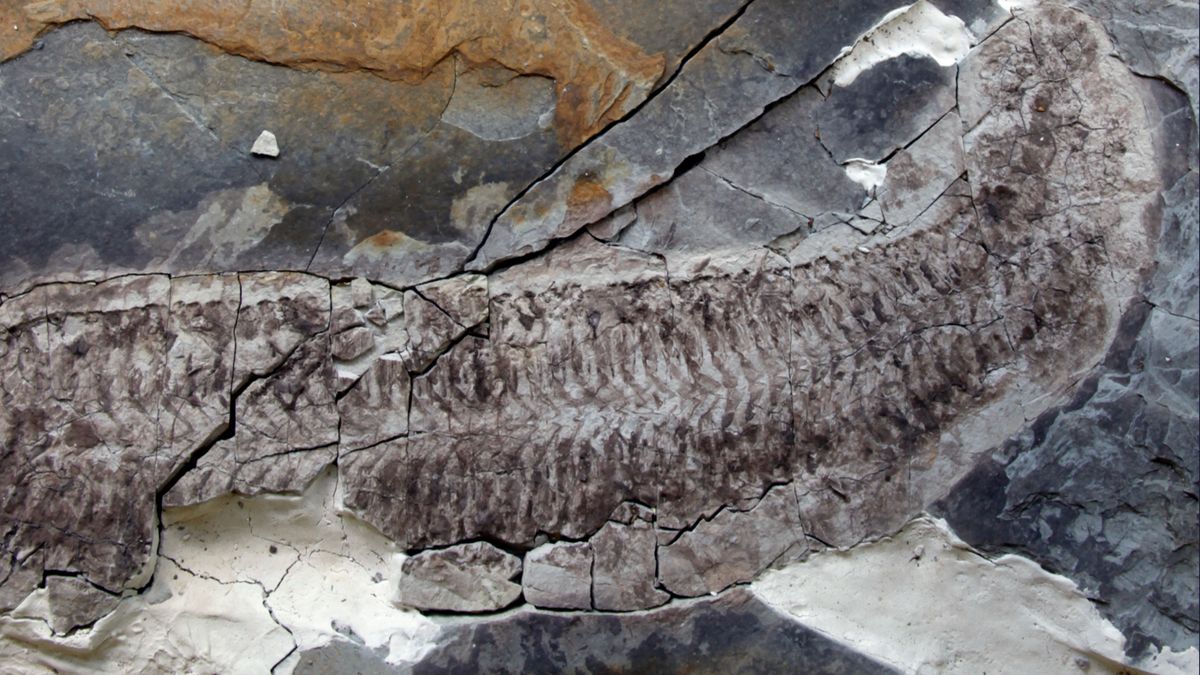Scientists have found two specimens of a 444 million-year-old “inside-out” fossil with well-preserved soft tissue, according to a new study. Unlike most fossils, the creature’s muscles and guts — but not its more durable shell — are preserved in ancient sediment that turned to stone.
The fossil, found 250 miles (402 kilometers) north of Cape Town in South Africa, is a new species of multisegmented arthropod that may have lived in oxygen-poor waters, according to the study, published March 26 in the journal Papers in Palaeontology.
Researchers named the new species Keurbos susanae and nicknamed the fossil “Sue” after its discoverer’s mom.
“Sue is an inside-out, legless, headless wonder,” lead author Sarah Gabbott, a paleontologist at the University of Leicester in the U.K., said in a statement. “Remarkably, her insides are a mineralized time-capsule: muscles, sinews, tendons and even guts all preserved in unimaginable detail. And yet her durable carapace, legs and head are missing — lost to decay over 440 million years ago.”
The researchers found the fossils in the Soom Shale, a site known for producing fossils with well-preserved soft tissues, more than 20 years ago. They had hoped to find additional specimens, but fossils of the species turned out to be quite rare. The silt, clay, and mud in which Sue was preserved were deposited on an ancient seafloor, beneath an ocean low in oxygen but high in dissolved, acidic hydrogen sulfide — suggesting that K. susanae may have been adapted for a low-oxygen environment.
Sue dates back to the Late Ordovician mass extinction (443 million years ago), when cold temperatures and glacier advancement eliminated nearly 85% of marine species.
Researchers are still working to understand how soft tissues in fossils like K. susanae are preserved in the Soom Shale. Clay minerals may have played a role, as could calcium phosphate, a compound commonly found in fossilized muscles. On the other hand, the shells and exoskeletons of species preserved in Soom Shale likely dissolved in the acidic ocean.

Because the K. susanae specimen was fossilized inside out, scientists still aren’t sure of the species’ evolutionary history or how it compares to other fossils from the same time period.
“We are now sure she was a primitive marine arthropod, but her precise evolutionary relationships remain frustratingly elusive,” Gabbott said in the statement. The fossil’s segmented trunk suggests it had limbs of some kind — but comparing Sue to known fossil species would require a sample with part of the exoskeleton preserved.
Recent quarrying activity has buried the site where Gabbott and her colleagues found Sue, so it’s unlikely they’ll find other examples of the same species with intact legs or a head, the team said.
“I’d always hoped to find new specimens, but it seems after 25 years of searching this fossil is vanishingly rare — so I can hang on no longer,” Gabbott said. “Especially as recently my mum said to me, ‘Sarah, if you are going to name this fossil after me, you’d better get on and do it before I am in the ground and fossilized myself’.”
Gabbott joked that she named the fossil after her mom because she’s a “well-preserved specimen.” But the true reason, she said, is that “my mum always said I should follow a career that makes me happy — whatever that may be. For me that is digging rocks, finding fossils and then trying to figure out how they lived what they tell us about ancient life and evolution on Earth.”





